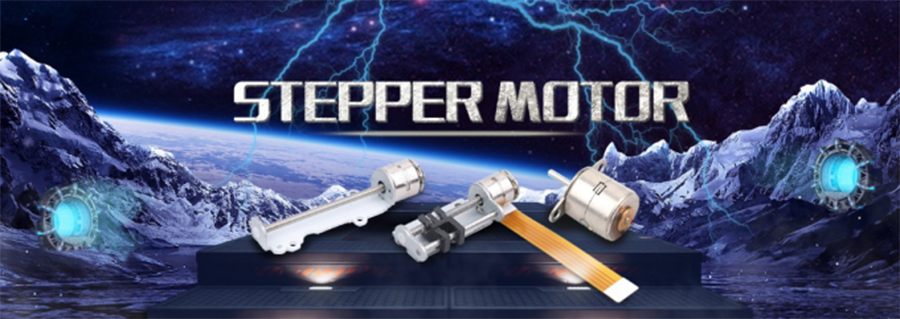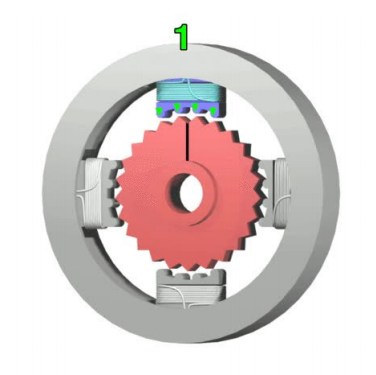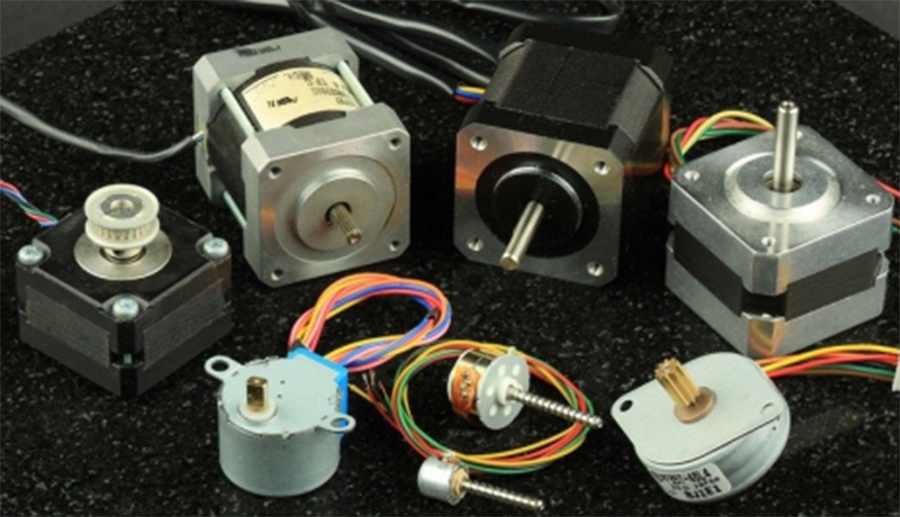1. Що такекроковий двигун?
Крокові двигуни рухаються інакше, ніж інші двигуни. Крокові двигуни постійного струму використовують переривчастий рух. У їхніх корпусах є кілька груп котушок, які називаються «фазами», які можна обертати, активуючи кожну фазу по черзі. По одному кроку за раз.
Керуючи кроковим двигуном через контролер/комп'ютер, ви можете точно позиціонувати його з заданою швидкістю. Завдяки цій перевазі крокові двигуни часто широко використовуються в обладнанні, яке вимагає точного руху.
Крокові двигуни мають різні розміри, форми та конструкції. У цій статті буде детально пояснено, як вибрати кроковий двигун відповідно до ваших потреб.

2. Які перевагикрокові двигуни?
А. Позиціонування- Оскільки рух крокових двигунів є точним та повторюваним, їх можна використовувати в різноманітних точно керованих продуктах, таких як 3D-друк, ЧПК, платформа камери тощо. Деякі жорсткі диски також використовують кроковий двигун для позиціонування зчитувальної головки.
B. Контроль швидкості- точні кроки також означають, що ви можете точно контролювати швидкість обертання, що підходить для виконання точних дій або керування роботом
C. Низька швидкість та високий крутний момент- Загалом, двигуни постійного струму мають низький крутний момент на низьких швидкостях. Але крокові двигуни мають максимальний крутний момент на низьких швидкостях, тому вони є гарним вибором для низькошвидкісних високоточних застосувань.
3. Недолікикроковий двигун :
А. Неефективність- На відміну від двигунів постійного струму, споживання крокових двигунів не сильно залежить від навантаження. Коли вони не виконують роботу, через них все одно протікає струм, тому вони зазвичай мають проблеми з перегрівом, а ефективність нижча.
B. Крутний момент на високій швидкості- зазвичай крутний момент крокового двигуна на високій швидкості нижчий, ніж на низькій швидкості, деякі двигуни все ще можуть досягати кращої продуктивності на високій швидкості, але для досягнення цього ефекту потрібен кращий привід
C. Неможливо контролювати- звичайні крокові двигуни не можуть отримувати зворотний зв'язок / визначати поточне положення двигуна, ми називаємо це "розімкнутим циклом". Якщо вам потрібне керування "замкнутим циклом", вам потрібно встановити енкодер і драйвер, щоб ви могли контролювати / контролювати точне обертання двигуна в будь-який час, але вартість дуже висока, і це не підходить для звичайних продуктів.

Фаза крокового двигуна
4. Класифікація степінгу:
Існує багато типів крокових двигунів, що підходять для різних ситуацій.
Однак, за звичайних обставин, двигуни з постійними магнітами та гібридні крокові двигуни зазвичай використовуються без урахування двигунів для приватних серверів.
5. Розмір двигуна:
Першим фактором, який слід враховувати при виборі двигуна, є його розмір. Крокові двигуни варіюються від мініатюрних 4-міліметрових (які використовуються для керування рухом камер у смартфонах) до гігантських, таких як NEMA 57.
Двигун має робочий крутний момент, цей крутний момент визначає, чи може він задовольнити ваші потреби в потужності двигуна.
Наприклад: NEMA17 зазвичай використовується в 3D-принтерах та невеликому обладнанні з ЧПК, а більші двигуни NEMA використовуються в промисловому виробництві.
NEMA17 тут стосується зовнішнього діаметра двигуна, який становить 17 дюймів, що є розміром у дюймовій системі, що становить 43 см при переведенні в сантиметри.
У Китаї для вимірювання розмірів зазвичай використовуються сантиметри та міліметри, а не дюйми.
6. Кількість кроків двигуна:
Кількість кроків на оберт двигуна визначає його роздільну здатність та точність. Крокові двигуни мають кроки від 4 до 400 на оберт. Зазвичай використовується 24, 48 та 200 кроків.
Точність зазвичай описується як ступінь кожного кроку. Наприклад, крок 48-ступінчастого двигуна становить 7,5 градуса.
Однак недоліками високої точності є швидкість та крутний момент. За тієї ж частоти швидкість високоточних двигунів нижча.

7. Коробка передач:
Ще один спосіб покращити точність і крутний момент – використовувати редуктор.
Наприклад, коробка передач з передавальною здатністю 32:1 може перетворити 8-ступінчастий двигун на 256-ступінчастий прецизійний двигун, збільшивши при цьому крутний момент у 8 разів.
Але вихідна швидкість відповідно зменшиться до однієї восьмої від початкової.
Невеликий двигун також може досягти ефекту високого крутного моменту за допомогою редуктора.
8. Вал:
Останнє, що вам потрібно врахувати, це те, як підібрати приводний вал двигуна та як підібрати вашу систему приводу.
Типи валів бувають:
Круглий вал / D-подібний вал: Цей тип вала є найстандартнішим вихідним валом, який використовується для з'єднання шківів, зубчастих передач тощо. D-подібний вал більше підходить для високого крутного моменту, щоб запобігти прослизанню.
Вал шестерні: Вихідний вал деяких двигунів є шестернею, яка використовується для відповідності певній системі передач.
Гвинтовий вал: Двигун з гвинтовим валом використовується для побудови лінійного приводу, а для досягнення лінійного керування можна додати повзунок.
Будь ласка, зв'яжіться з нами, якщо вас цікавить будь-який з наших крокових двигунів.
Час публікації: 29 січня 2022 р.
